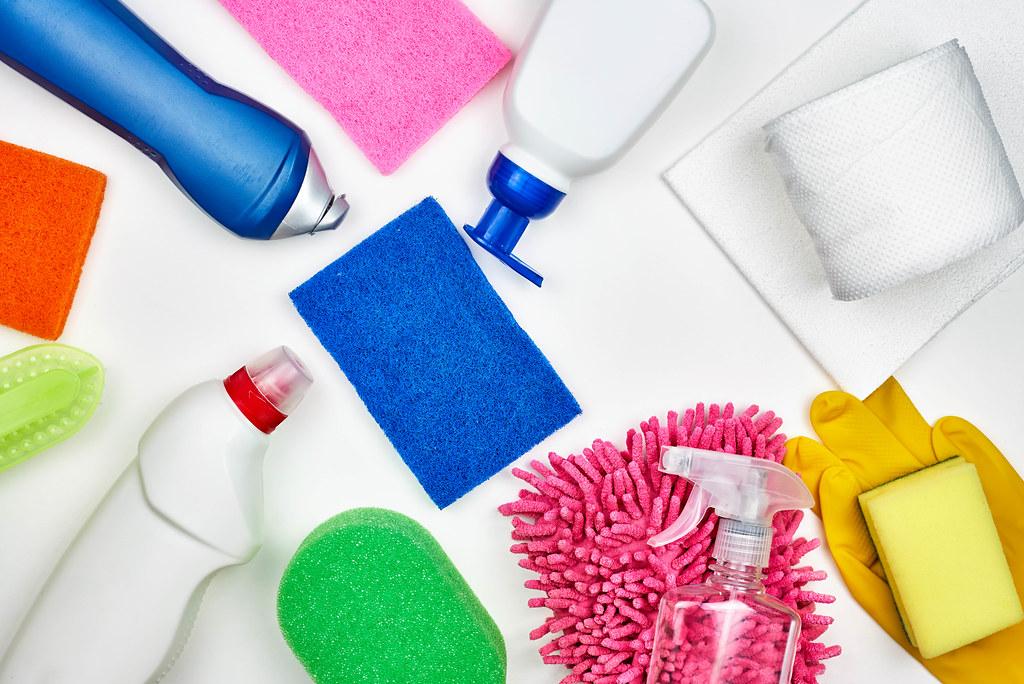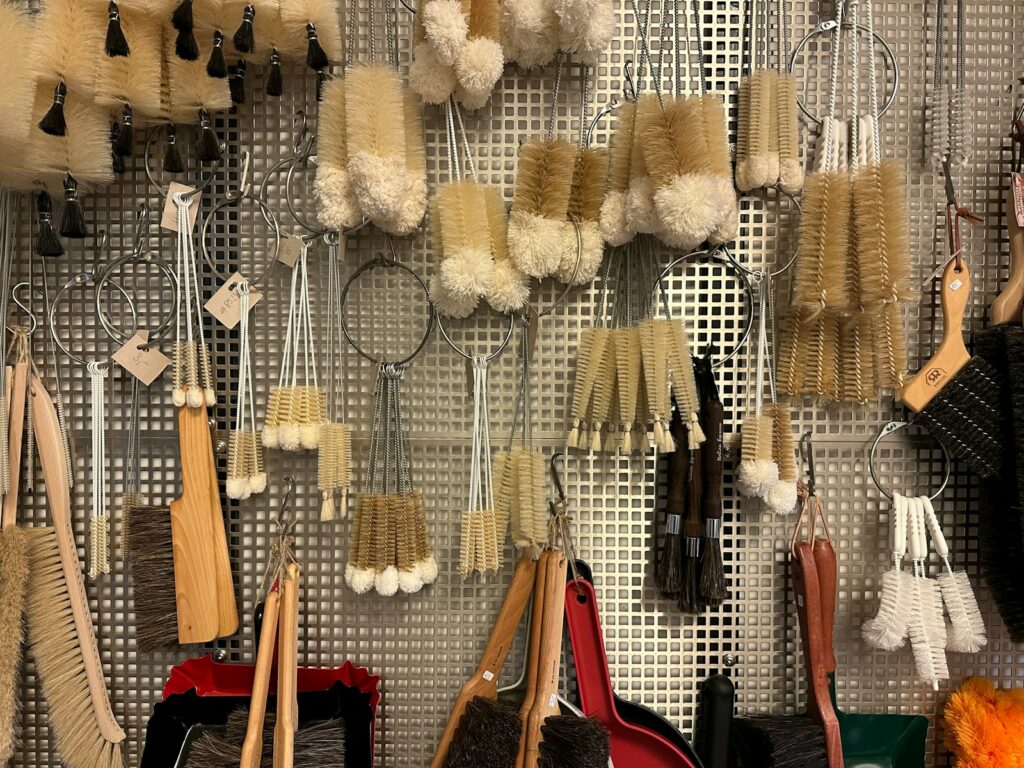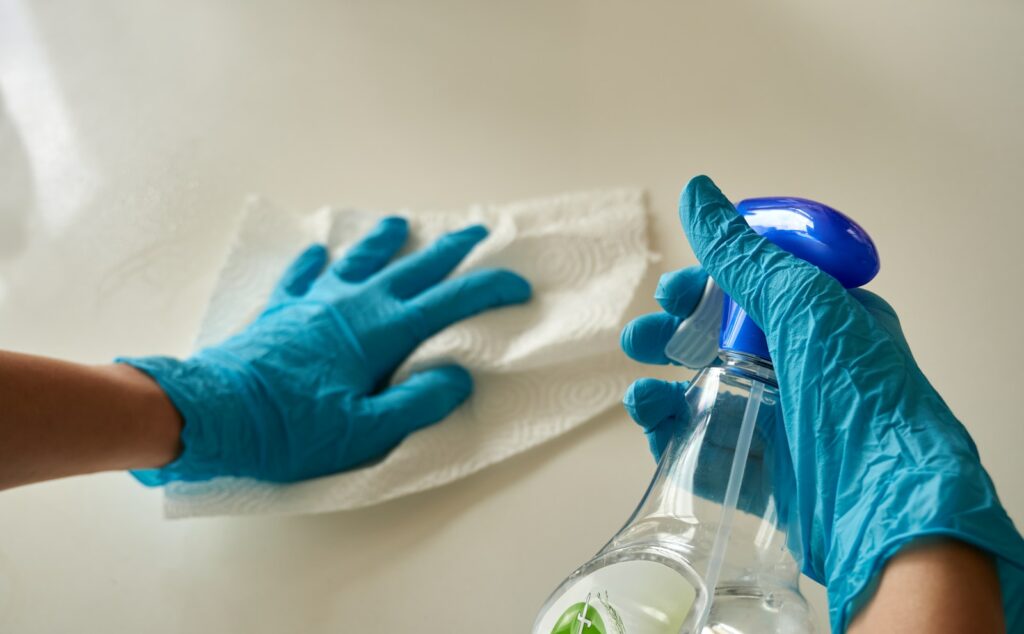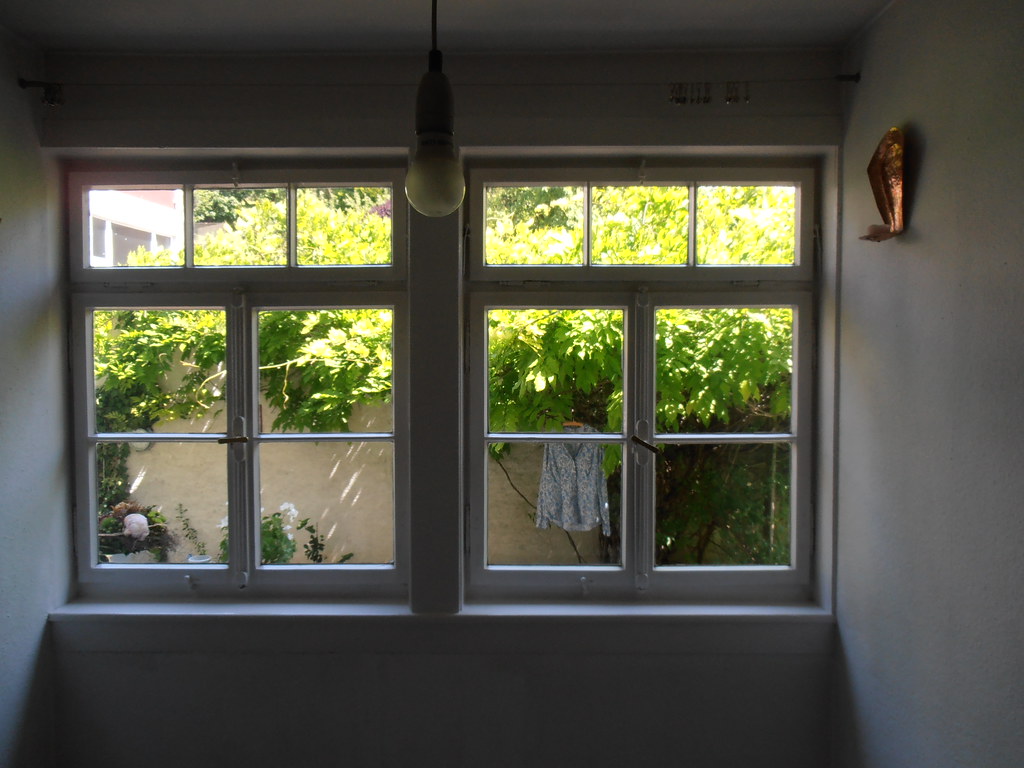Have you ever noticed that no matter how much you clean your windows, it still feels like there’s something blocking that crisp, fresh air from entering your home? Well, the culprit might just be your window screens. Over time, these crucial barriers against bugs and debris can become clogged with dust, pollen, and other pollutants, hindering the flow of clean air into your living space. But fear not, because in this article, we’re going to show you how to clean your window screens and reclaim that invigorating breeze. So grab some cleaning supplies and let’s get started on improving the air quality in your home!
Table of Contents
- Choose the Right Cleaning Day
- Gather Your Window Screen Cleaning Kit
- Employ a Soft-Bristle Brush
- Mix a Homemade Eco-Friendly Solution
- Apply the Gentle Power of a Vacuum
- Master the Art of Rinsing
- Embrace Drying with Caution
- Maintain with a Regular Dusting Schedule
- Defend Screens with Protective Treatments
- Implement Seasonal Deep Cleaning Sessions
- Questions & Answers for How to Clean Window Screens for Improved Air Quality
- Key Takeaways
Choose the Right Cleaning Day

So, you’ve decided it’s time to tackle the task of cleaning your window screens. But before you jump in, it’s important to choose the right day for this project.
Here are a few things to consider when scheduling your screen cleaning day:
Weather Conditions
Pros:
– Choosing a sunny day will allow your screens to dry more quickly.
– Windy days can help to blow away debris and dust from the screens.
– Warm temperatures can make the cleaning process more enjoyable.
Cons:
- Rainy or high-humidity days may not be ideal for cleaning as it could hinder the drying process.
Your Schedule
Consider your own availability and schedule the cleaning day when you have a few hours to dedicate to the task. It’s important to allow enough time for thorough cleaning and drying.
Personal Preferences
Do you prefer to clean on a weekend when you have more free time, or are you a weekday cleaner? Choose a day that aligns with your personal preferences and energy levels.
Overall, it’s best to choose a clear, sunny day when you have some free time to dedicate to the task of cleaning your window screens for improved air quality. By choosing the right cleaning day, you can ensure that the process goes smoothly and efficiently. So, why not schedule a screen cleaning day this weekend and enjoy the benefits of fresh, clean air flowing through your windows
Gather Your Window Screen Cleaning Kit

When it comes to improving the air quality in your home, one often overlooked task is cleaning your window screens. Over time, dust, dirt, and pollen can build up on your window screens, reducing the effectiveness of your air filtration system. But fear not, with the right tools and a little elbow grease, you can easily clean your window screens and breathe easier.
Here’s what you’ll need for your window screen cleaning kit:
- Soft-bristle brush: A gentle brush is perfect for loosening and removing debris from your window screens without causing damage.
- Mild dish soap: A simple solution of dish soap and water is effective for breaking down dirt and grime on your screens.
- Microfiber cloth: Use a soft microfiber cloth to wipe down your screens and leave them looking squeaky-clean.
- Hose with spray nozzle: A steady stream of water from a hose with a spray nozzle is essential for rinsing off the soap and dirt from your screens.
Now that you have your window screen cleaning kit assembled, it’s time to get down to business. Remove the screens from your windows and place them on a flat surface, such as a tarp or a clean driveway. Use the soft-bristle brush to gently scrub away any loose dirt and debris. Then, mix a solution of mild dish soap and water and use the microfiber cloth to wash the screens, making sure to cover both sides thoroughly. Finally, rinse the screens with the hose and allow them to air dry before reinstalling them in your windows.
With your window screens cleaned, you can rest easy knowing that you’re doing your part to improve the air quality in your home. Regular maintenance of your window screens will not only help keep your air clean, but it will also extend the life of your screens, saving you money in the long run. So and give your screens the TLC they deserve. Your lungs will thank you!
Employ a Soft-Bristle Brush

When it comes to cleaning window screens for improved air quality, using a soft-bristle brush is a game-changer. The delicate nature of window screens requires a gentle touch, and a soft-bristle brush is perfect for the job.
Here’s how to effectively to clean your window screens:
Remove the screen: Carefully remove the window screen from its frame and lay it on a flat surface. This will make it easier to access both sides of the screen and ensure a thorough cleaning.
Brush away debris: Use the soft-bristle brush to gently sweep away any dirt, dust, and debris from the screen. Start at one corner and work your way across the entire surface, being sure to pay special attention to the corners and edges where dirt tends to accumulate.
Rinse the screen: After brushing, rinse the window screen with a gentle stream of water from a hose or faucet. Be sure to use low to moderate pressure to avoid damaging the screen, and thoroughly rinse both sides to ensure all debris is washed away.
Allow to dry: Once the screen is free of debris and thoroughly rinsed, allow it to dry completely before re-installing it in the window.
Employing a soft-bristle brush to clean your window screens not only improves air quality by removing dust and debris, but it also extends the life of your screens. This gentle method prevents damage to the delicate mesh, ensuring that your window screens will continue to effectively filter out allergens and pollutants for years to come.
So, next time you tackle this important task, reach for a soft-bristle brush and enjoy a breath of fresh, clean air in your home.
Mix a Homemade Eco-Friendly Solution

Cleaning window screens is a great way to improve the air quality in your home, as dust and debris can build up on the screens and affect the flow of fresh air. You can make your own eco-friendly cleaning solution using items you probably already have at home.
To , you will need:
- 1 cup of distilled white vinegar
- 1 cup of water
- A few drops of essential oil (optional)
- A spray bottle
Simply combine the distilled white vinegar and water in the spray bottle. If you’d like, you can add a few drops of your favorite essential oil for a pleasant scent. Shake the bottle to mix the solution thoroughly.
Using an eco-friendly solution to clean your window screens not only helps to improve air quality, but it also reduces the use of harmful chemicals in your home. This simple and effective method is a great way to keep your home clean and fresh without harming the environment.
Apply the Gentle Power of a Vacuum

Cleaning your window screens is an important step in maintaining good indoor air quality. Over time, dust, pollen, and other debris can accumulate on your screens, impacting the air that circulates through your windows. To ensure that your home is filled with fresh, clean air, it’s essential to regularly clean your window screens using the gentle power of a vacuum.
Step 1: Remove the Screens
Start by removing the window screens from their frames. Lay them on a flat surface, such as a driveway or patio, to make cleaning them easier.
Step 2: Vacuuming
Use a soft brush attachment on your vacuum to gently remove the buildup of dirt, dust, and debris from the screens. Work in small sections, making sure to cover the entire surface of each screen. Make sure to vacuum both sides for a thorough clean.
Step 3: Spot-Cleaning
For any stubborn spots or stains, use a mild soapy water solution and a soft bristle brush to gently scrub the affected areas. Rinse the screens with clean water and dry them thoroughly before re-installing.
Step 4: Re-Install Screens
After the screens are completely dry, re-install them into their frames and enjoy the improved air quality in your home.
By following these steps to clean your window screens, you can ensure that the air flowing into your home is free of contaminants, promoting a healthier living environment for you and your family. Regularly cleaning your window screens not only improves air quality but also extends the lifespan of your screens, keeping them in top condition for years to come.
Master the Art of Rinsing
Cleaning your window screens is a crucial step in improving the air quality in your home. The accumulation of dirt, dust, and other debris on your screens can lead to poor air circulation and the presence of allergens. By mastering the art of rinsing, you can effectively remove these contaminants and enjoy cleaner, fresher air inside your home.
To clean your window screens for improved air quality, follow these simple steps:
Step 1: Remove the screens
Carefully remove the window screens from their frames. Lay them flat on a clean, flat surface, such as a driveway or patio.
Step 2: Rinse with water
Using a garden hose or a bucket of water, thoroughly rinse the screens to remove loose dirt and debris. Be sure to rinse both sides of the screens to ensure a thorough cleaning.
Step 3: Scrub the screens
Using a mild detergent and a soft bristle brush, gently scrub the screens to remove any stubborn dirt and grime. Pay close attention to the corners and edges, where debris tends to accumulate.
Step 4: Rinse again
Once the screens are scrubbed, rinse them once more with clean water to ensure all detergent and dirt are completely removed. Allow the screens to air dry before replacing them in their frames.
By following these simple steps, you can effectively clean your window screens and improve the air quality in your home. Regularly cleaning your screens will help to reduce the presence of allergens and promote better air circulation, creating a healthier living environment for you and your family.
Embrace Drying with Caution

Cleaning your window screens is an essential part of maintaining good air quality in your home. However, it’s important to approach the drying process with caution to ensure that the screens are not damaged in the process. Excessive moisture and harsh sunlight can both have detrimental effects on the delicate materials of window screens. By following these tips, you can ensure that your window screens are thoroughly cleaned without risking any damage during the drying process.
When it comes to drying your window screens, avoid using high heat. Excessive heat can cause the materials to warp or become brittle, ultimately shortening the lifespan of your window screens. Instead, opt for air drying in a cool, shaded area. This will allow the screens to dry naturally without the risk of damage from heat or sunlight.
Another important consideration when drying your window screens is to avoid excessive moisture. While it’s important to thoroughly rinse the screens during the cleaning process, allowing them to remain overly wet during the drying process can lead to mildew or mold growth. To prevent this, ensure that the screens are well-drained before setting them out to dry.
For an extra level of caution, you may want to consider placing the screens on a towel during the drying process. This will help to absorb any excess moisture and prevent it from pooling at the bottom of the screen, reducing the risk of damage from prolonged exposure to moisture.
In summary, embracing drying with caution is essential when it comes to cleaning your window screens for improved air quality. By avoiding excessive heat, minimizing moisture, and using a towel to absorb excess water, you can effectively clean your window screens without risking any damage during the drying process.
By following these tips, you can ensure that your window screens remain in good condition and continue to contribute to the overall air quality in your home.
Maintain with a Regular Dusting Schedule
Regular dusting is key to keeping your window screens clean and improving the air quality in your home. Here are some steps you can take to incorporate regular dusting into your cleaning routine:
- Set a Schedule: Aim to dust your window screens at least once a month to prevent dirt and debris from building up over time.
- Use a Soft Brush or Vacuum: Gently brush away dust and dirt from the surface of the screen with a soft-bristled brush or use a vacuum with a brush attachment to remove debris.
In addition to regular dusting, it’s important to give your window screens a deep clean every so often to maintain optimal air quality in your home. Here are some tips for a thorough cleaning:
- Remove the Screens: Carefully take the screens out of the window to make cleaning easier.
- Wash with Mild Soap and Water: Use a mixture of mild soap and water to gently scrub the screens, then rinse with clean water and allow them to air dry before re-installing.
By maintaining a regular dusting schedule and incorporating occasional deep cleaning, you can ensure that your window screens are free from dirt and dust, which can improve the air quality in your home. Cleaner screens mean a fresher, healthier living environment for you and your family.
Overall, regular maintenance is the key to keeping your window screens clean and improving the air quality in your home. With a simple dusting schedule and occasional deep cleaning, you can ensure that your screens are free from dirt and dust, contributing to a healthier living environment for you and your family.
Defend Screens with Protective Treatments

Cleaning your window screens can be a hassle, and it’s easy to accidentally damage them in the process.
One way to keep your window screens clean and in good condition is to apply a protective treatment. These treatments create a barrier that repels dust and pollen, making it easier to keep your screens clean and ensuring that they can continue to do their job of letting fresh air into your home. There are several types of protective treatments available, including:
- UV-resistant coatings: These treatments protect your screens from sun damage and help prevent dust and pollen from sticking to them.
- Water repellant sprays: These treatments make it easier to clean your screens by repelling water, preventing dirt from sticking to the surface.
- Anti-static coatings: These treatments help prevent dust and pollen from sticking to your screens, making them easier to keep clean.
Applying a protective treatment to your window screens is a simple and effective way to improve the air quality in your home. It can also help extend the life of your screens by protecting them from damage caused by dust, pollen, and other environmental factors. With the right treatment, you can enjoy fresh, clean air in your home without the hassle of constantly cleaning your window screens.
Implement Seasonal Deep Cleaning Sessions

By implementing seasonal deep cleaning sessions for your window screens, you can ensure that the air in your home remains clean and healthy.
To start the cleaning process, remove the window screens from their frames and take them outside. Use a vacuum with a brush attachment to gently remove any loose debris from the screens. Be sure to vacuum both sides of the screens to ensure a thorough clean.
Next, create a cleaning solution by mixing warm water with a small amount of gentle dish soap. Using a soft bristle brush, gently scrub the screens with the cleaning solution to remove any embedded dirt or grime. Be sure to pay extra attention to the corners and edges of the screens, where debris tends to accumulate.
After scrubbing the screens, rinse them thoroughly with clean water to remove any soap residue. Allow the screens to air dry completely before reinstalling them in the window frames. Once the screens are dry, inspect them for any tears or damage, and make any necessary repairs before reinstalling.
By following these simple steps, you can keep your window screens clean and free of debris, ensuring improved air quality in your home. With regular deep cleaning sessions, you can enjoy the benefits of fresh air without worrying about pollutants entering your home through dirty screens. Now, you can breathe easy knowing that your home is a healthy and clean environment for you and your family.
Questions & Answers for How to Clean Window Screens for Improved Air Quality
How often should I clean my window screens?
You should aim to clean your window screens at least once a year to improve the air quality in your home.
What is the best method for cleaning window screens?
A gentle brush, mild soap, and water are all you need to effectively clean your window screens.
Can I remove the window screens for cleaning?
Yes, you can remove the window screens for a more thorough cleaning and to ensure you get into all the grooves and corners.
Is it necessary to vacuum the window screens before cleaning them?
Yes, vacuuming the window screens before cleaning can help remove any loose dirt, dust, or debris, making the cleaning process more effective.
Can I use a pressure washer to clean my window screens?
It is not advised to use a pressure washer as it may cause damage to the delicate mesh of the window screens. Stick to the gentle brush and soap method.
Should I clean both sides of the window screens?
Yes, it’s important to clean both the inside and outside of the window screens to ensure you’re removing all the dust and dirt that could impact air quality.
Can I use a commercial window cleaning solution on my window screens?
You should avoid using commercial window cleaning solutions on window screens as they may contain harsh chemicals that could damage the mesh. Stick to mild soap and water.
How can I prevent my window screens from getting dirty quickly after cleaning?
One way to prevent your window screens from getting dirty quickly after cleaning is to keep the surrounding area clean and free from dust and debris.
Are there any alternative methods for cleaning window screens?
Some people swear by using a lint roller to quickly remove dust and debris from window screens. It’s a convenient alternative method for light touch-ups between deep cleanings.
How will cleaning my window screens improve the air quality in my home?
By removing dust, dirt, and other particulates from your window screens, you’re helping to ensure that only clean, fresh air enters your home, ultimately improving the overall air quality.
Key Takeaways
Now that you know how to clean your window screens for improved air quality, you can breathe easy knowing that you’re letting fresh, clean air flow into your home. By taking the time to regularly clean your window screens, you can enjoy a healthier and more comfortable living environment. So, grab your cleaning supplies and get to work – your lungs will thank you!
